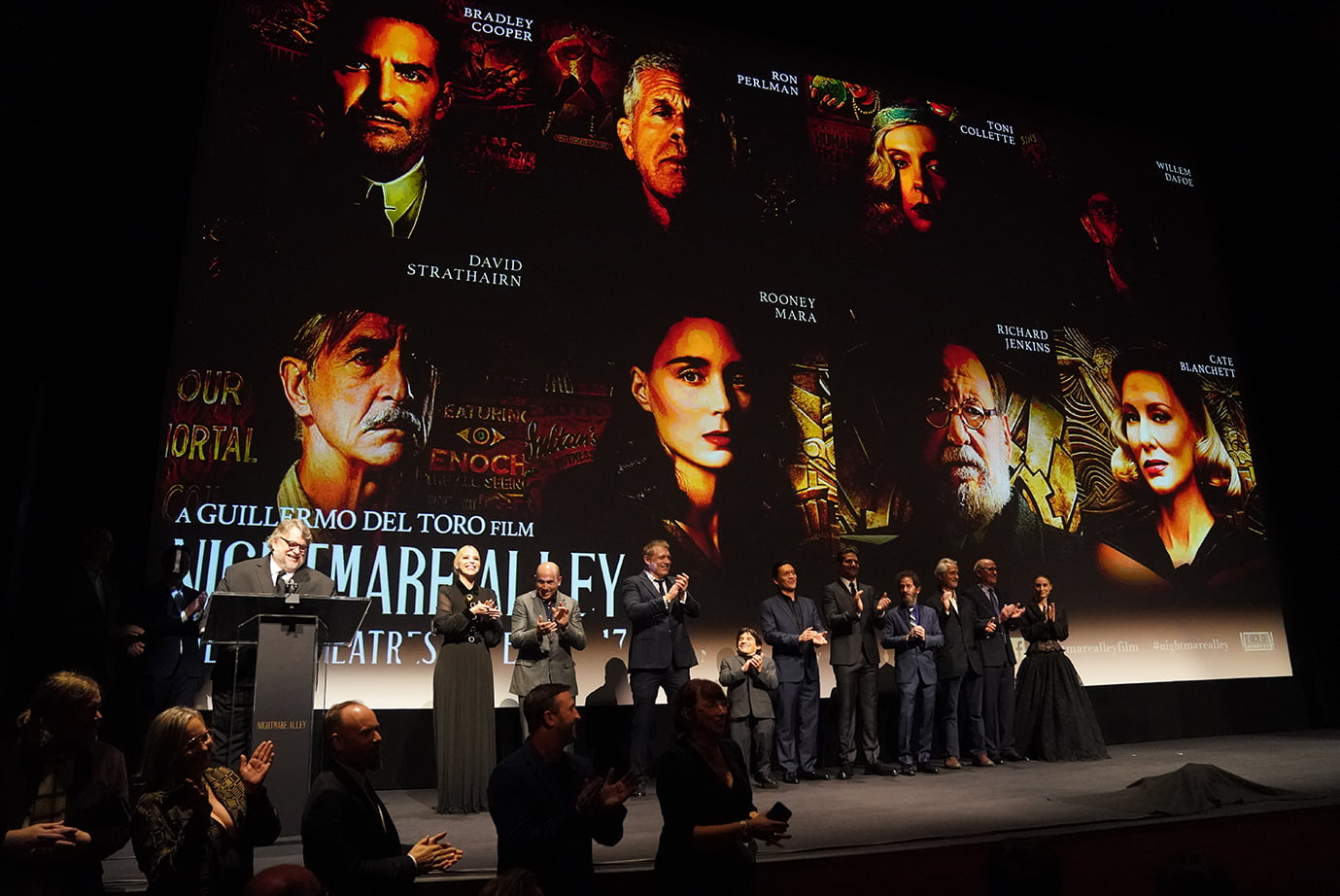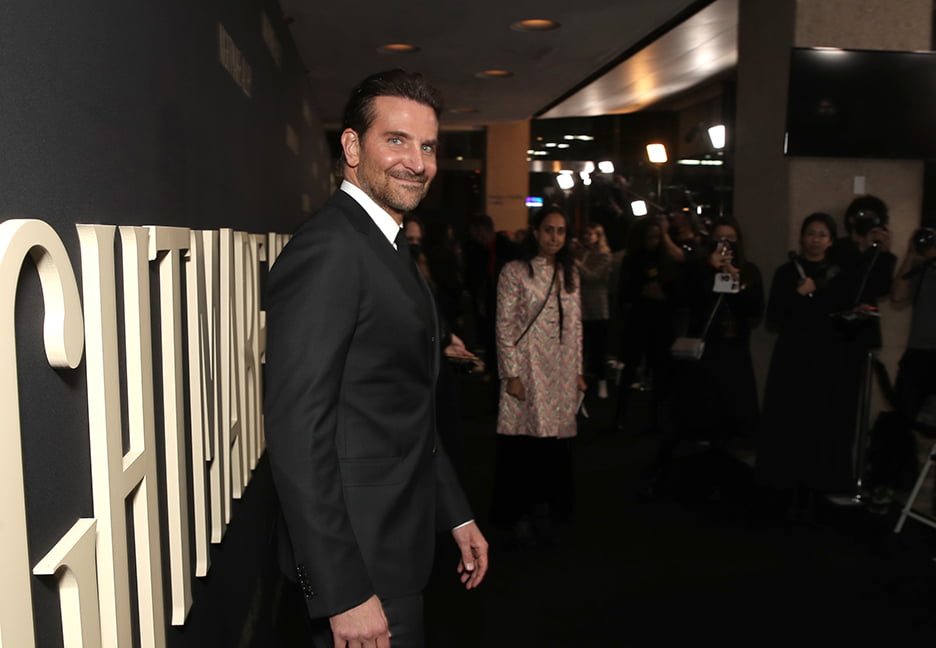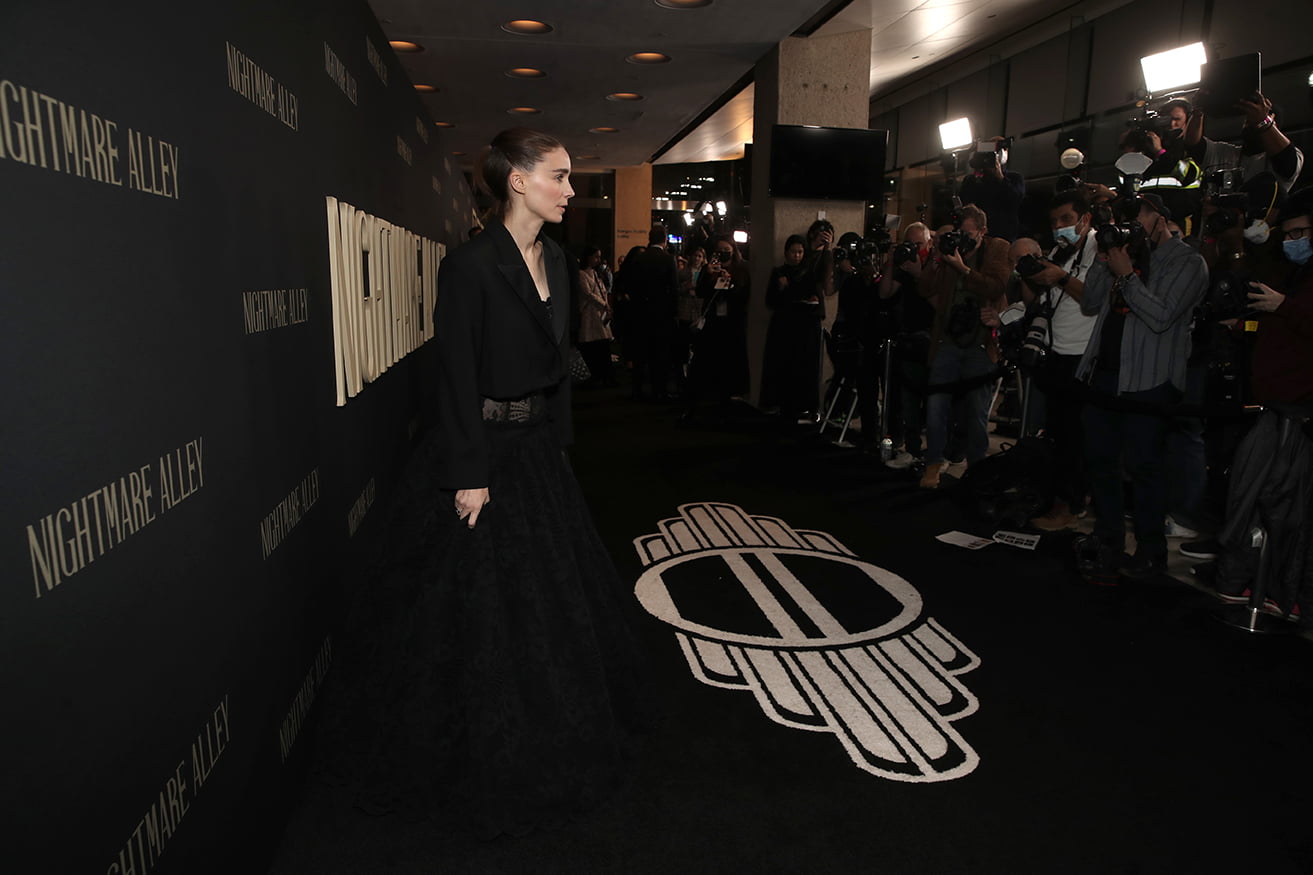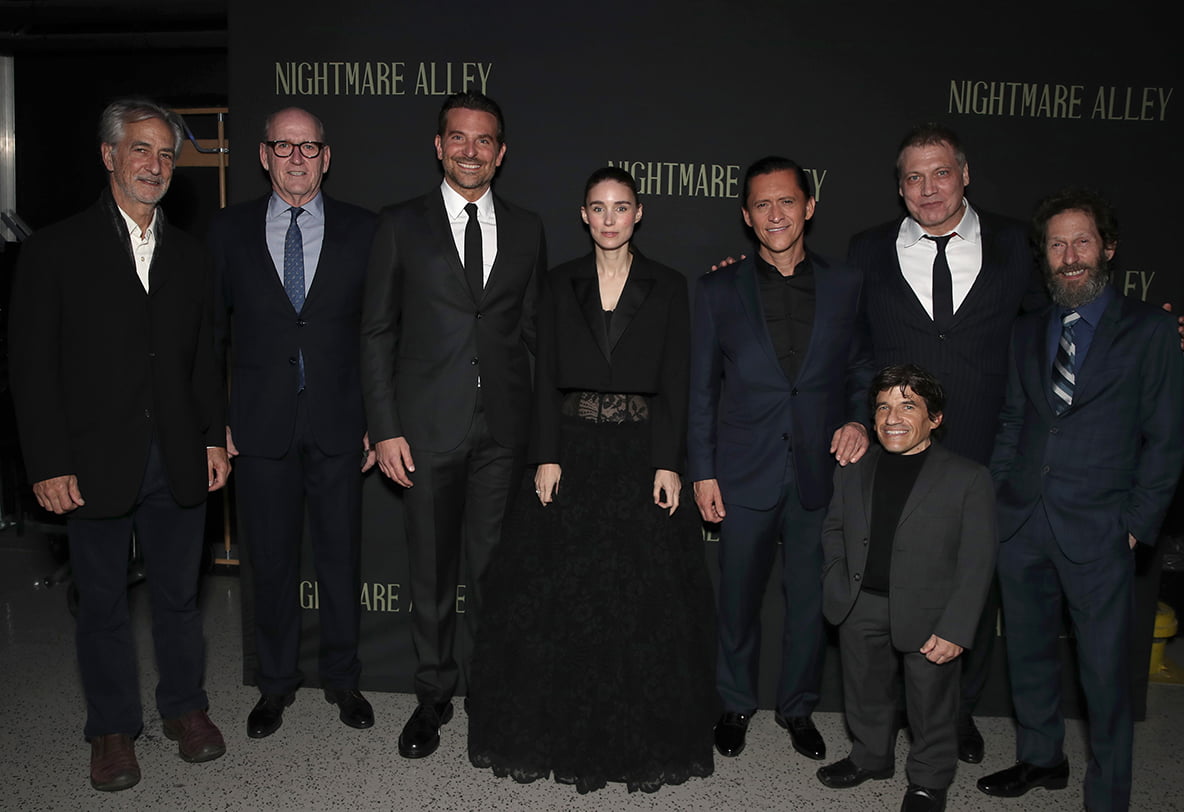Guillermo Del Toro’s latest film ‘NIGHTMARE ALLEY’ is based on William Lindsay Gresham’s fatalistic novel published in 1946 about a charismatic huckster consumed by uncontrolled ambition. The film moves from the inner circle of a 1930s traveling carnival, a realm of shocks and wonders, to the halls of wealth and power where seduction and treachery reside. At its core lies a man who sells his soul to the art of the con. Within NIGHTMARE ALLEY, there are seething layers of corruption, vice, lust, betrayal, and cosmic absurdity that build as Stanton learns to cynically prey on the human need to believe in something outside themselves and our world.
“NIGHTMARE ALLEY departs from the fantastical elements Guillermo is known for creating,” adds del Toro’s frequent collaborator, producer J. Miles Dale. “But he brings to this new territory all his storytelling skills and design prowess. Ultimately, he tells the story of a man hoisted onto his own karma. One of the film’s most powerful themes is that no man can outrun himself.”

The first half of NIGHTMARE ALLEY kicks off with a mesmerizing, if purposely disorienting, submersion directly into the beating heart of the carnival. The empty Markham Fairground just outside Toronto that became the crew’s blank slate. Here, Deverell (Star Trek: Discovery, X-Men) erected a demimonde of vintage amusement rides including an authentic Ferris wheel, a functioning merry go-round, a heaven-and-hell-themed funhouse, as well as a lively array of sideshow stages and tents advertising the carnival’s star attractions. In terms of mood, palette and texture, del Toro directed the team towards the work of three celebrated American realist painters—the strongly defined lighting and potent loneliness of Edward Hopper, the hardscrabble portraits of Andrew Wyeth and the dramatic urban back alleys of George Bellows—as well as the Danish painter Vilhelm Hammershøi, known for his stark, shadowy interiors.
Once Stanton and Molly leave for the bright lights of Buffalo, where they strike it rich as a swanky nightclub act, the film and ambiance do a 180. A sleek Art Deco aesthetic reflecting the hot new trends of the late 30s prevails in the second part of the film. Jumping ahead several years, the film rejoins Stanton and Molly on stage in a lavish spherical room in the fictional Copacabana. The club was created in Toronto, inside that city’s historic Carlu Round Room, erected in 1930 and designed by French architect Jacques Carlu, muralist Natacha Carlu, and architect René Cera on the 7th floor of the Eaton’s College Street department store.
Stanton and Molly’s hotel suite, where their future together becomes a question mark, was hand built on a soundstage but modeled after another Toronto landmark: the Beaux Arts-style Parkwood Estate in Ontario, which also provided the key location of Grindle’s manicured garden.
The centerpiece design of the second half of the film is the office of Dr. Lilith Ritter where Stanton hatches his most elaborate illusion and starts to unravel. Here, Deverell looked to another design stunner of the late 1920s: the so-called “Weil-Worgelt study,” a famous room interior designed by the New York office of the Parisian decorating firm Alavoine for an elite client. Featuring veneers of palisander and olive wood and large, abstract lacquer panels in the Art Deco style, Deverell could see Dr. Ritter feeling at home in this kind of luxe elegance where she can remain detached from her patients’ traumas.
Deverell created another imposing office for Evan Grindle, using the R.C. Harris Water Treatment Plant in Toronto, which has been used in different ways for several del Toro features including THE SHAPE OF WATER, for the exterior. For the interior, she and her team custom-built the room’s massive chandeliers, marble fireplace and sculpted bronze inlays.



Director: Guillermo del Toro
Screenplay: Guillermo del Toro, Kim Morgan, based on the novel by William Lindsay Gresham
Producers: Guillermo del Toro, p.g.a., J. Miles Dale, p.g.a., Bradley Cooper, p.g.a.
Cast: Bradley Cooper, Cate Blanchett, Toni Collette, Willem Dafoe, Richard Jenkins, Rooney Mara, Ron Perlman, Mary Steenburgen, David Strathairn
OPENS NATIONWIDE IN THEATERS DECEMBER 17
Discover more from SNAP TASTE
Subscribe to get the latest posts sent to your email.


